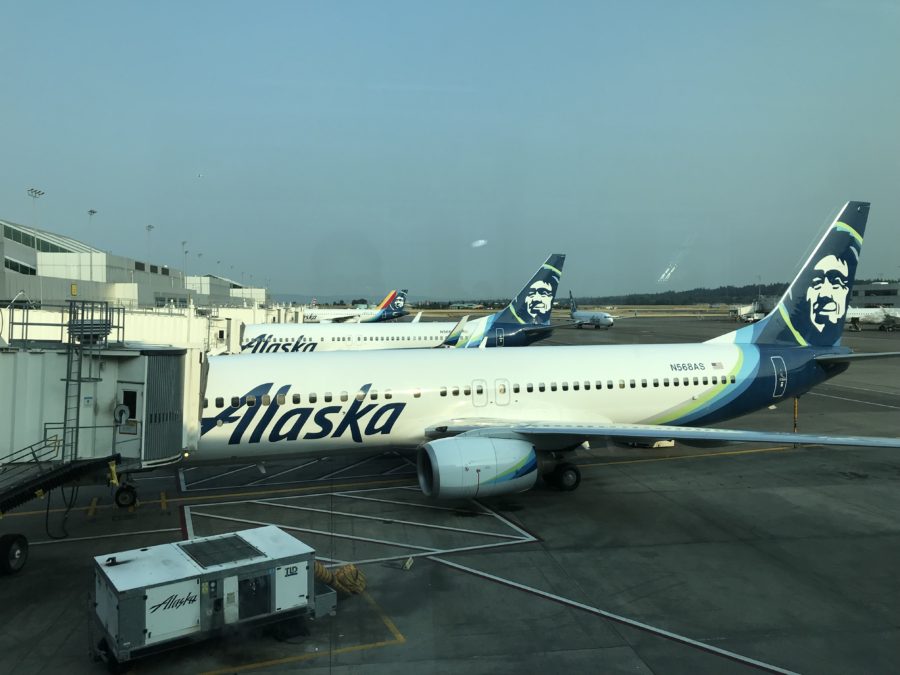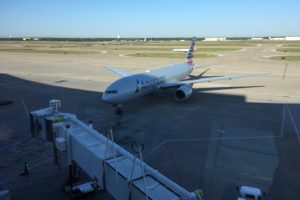Is Buying Airline Miles Worth It, And On Which Airlines?
I’m sure that many of you have seen promotions or advertisements on airline websites for buying airline miles or points, which may or may not seem like a good deal, depending on the price. Airline miles (depending on the airline) can provide excellent value, especially for premium cabin redemptions which otherwise would cost thousands of dollars. For those of you who don’t know, most airline awards programs allow you to buy miles and are for the most part intended to enable you to top off your account so you can have enough miles to make a redemption. However, many airlines also give promotions for buying miles, which can often be a fantastic deal. So is the whole buying-miles-thing a scam, should you frequently buy them, and when are promotions worth it?
The Basics Of Buying Miles
Airline programs over the years have introduced more ways (on average) to spend and use miles. Many airlines give you the ability to buy extra miles so that you can have enough miles to make a redemption. Many, such as United, also give you the ability to buy miles at check-out when booking an award ticket if you don’t have enough miles. Usually, the cost for buying miles is quite high when there isn’t a promotion: it costs approximately $25-$40 to buy 1,000 miles, which isn’t exactly a bargain. Often, airlines also run promotions on buying miles, which can sometimes be a good deal, although other times doesn’t really decrease the price by much. Some programs, such as Delta SkyMiles or Air Canada Aeroplan, don’t run promotions on buying miles at all, which means that unless you only need 2,000 (or so) more miles for a large redemption, you should never buy their miles.

However, some airlines do offer frequent and large bonuses on buying miles, which can give you some fantastic redemptions for a fraction of what the ticket would cost with cash. A lot of airlines offer bonuses on miles, which can range from sometimes as low as only a 15% bonus to as high as 150%! Many airlines also offer tiered bonuses, meaning that you will receive an elevated bonus for buying more miles. The cost of buying miles can range from anywhere from 3.5 cents to as little as 1.3 or 1.4 cents (with a promotion), which of course means something different for each award program. Some airlines additionally have caps on the amount of miles which you can buy per year, which usually range from 50,000 miles to 150,000 miles and sometimes are increased with status. Below is a list of airlines which frequently offer bonuses for buying miles (please note that this means nothing about the value of buying them).
- Alaska Airlines MileagePlan
- Aegean Miles+Bonus
- American Airlines AAdvantage
- JetBlue TrueBlue
- Southwest Airlines Rapid Rewards
- United MileagePlus
- Avianca LifeMiles
- British Airways Avios Executive Club
- Iberia Plus
- Etihad Guest
- Air France/KLM Flying Blue
Other points currencies, such as hotel points currencies (i.e. Marriott Bonvoy or Hilton HHonors) often also have points bonuses. Unfortunately, most transferrable points (Chase, Amex, Citi, Capital One, etc.) currencies don’t offer the ability to buy miles.
When Is Buying Miles Worth It? (Short Answer: It Depends)
For starters, buying miles without a promotion being in place is almost always a pretty bad deal. With tons of other ways to get miles, from credit card sign up bonuses to spending bonuses to shopping portals, it almost never makes sense to buy miles when there aren’t bonus miles offered. Even when there is a bonus on points bought, it can be very deceiving, because each awards program is different. One program may offer a 40% bonus on buying miles while another might offer a 75% bonus on buying miles, but it might turn out that the first promotion gets you more value per dollar in the end, possibly because that program might originally sell miles for less or has a more valuable points currency.

Overall, if you are contemplating buying miles, it should ultimately come down to only two things: the value and usefulness of the miles. How useful a points currency is to you depends on how many good redemptions there are in that specific points currency to you. Some points currencies might have a few really good redemptions, although they might just not be useful. For example, Iberia has really good award availability and award prices in business class on transatlantic flights, which sometimes allow you to buy round-trip flights for only $1,100, which is an amazing deal, although isn’t useful for everybody.
To determine how good a promotion is based on how many dollars you pay per mile, you first have to figure out how much the miles are worth. You could do this two ways; firstly, many blogs/websites have tried to determine the value of miles and points. You could go through all of the links that I have provided and try and figure out the average value of each currency, which is probably the best way to go if you are speculatively buying miles because of a great promotion for future use. There isn’t a set way to figure out the value of miles, but the value is generally figured out by the average amount of cents a mile gets you in reward redemptions, which is extremely variable. However, most people buy miles to either top off their account for a specific redemption or to outright buy all the miles necessary for a specific use. In that case, I would recommend trying to figure out the personal value of the miles for you, which I’ll explain using an example.
An Example Of How Basic Logic Can Sometimes Be Deceiving
Let’s say you want to fly to Frankfurt from Washington in business class so that you can have a good night’s sleep for the next day, although you’re happy flying back in coach and paying outright with cash. First, you see that United has an 85% bonus on purchasing 30,000 or more miles, which was a promotion United had in the latter half of last year. You find the following flight from Washington to Frankfurt using 60,000 miles in business class, which would cost approximately $1,200 buy buying miles. You then immediately see the cost for the one-way flight at nearly $9,000, which is 750% more than if you had bought the miles for the flight, which is a fantastic deal.


Each mile in that redemption would be worth about 15 cents, if you compare it to the price outright with money. In the promotion, each mile cost about 2.03 cents per mile, meaning that you would be getting about 7.5x the value that you had paid for by buying the miles. Or is it? Airline prices are deceiving, as they often charge less for round-trip flights than for one-way flights. If you had bought round-trip flights to Frankfurt in business class on United, flying on the same flight out, the entire ticket would have cost only $3,500, meaning that in value, the outbound flight would only cost $1,750, making each mile worth only 2.9 cents; only .8 cents more than if you had bought the one-way flight using the miles which you bought during the promotion.
The value of the miles get even less if you consider that other airlines charge even less in business class round-trip. If you were to buy business class outright with cash, you probably wouldn’t necessarily choose the product which is most easily redeemable with the miles which you would buy; you would (unless you are extremely picky about airlines) choose the cheapest product. Round-trip business via Dublin on Aer Lingus only costs $2,300 on similar dates, making the one-way flight worth $1,150–$50 less than the miles which you could buy for a one-way flight on United, and that’s not even counting the value of redeemable miles which you’d earn.

So while paying for miles can sometimes seem like a good deal, it can also sometimes be deceiving. In this specific case, I wouldn’t say that it’s worth it to buy miles solely for the one flight starting from scratch for this one redemption (although maybe for other redemptions), but if you had some United miles but not enough (say 30,000 miles), it would without a doubt be a good deal to buy the necessary amount of remaining miles. While in this example, you might not want to buy miles, provided in my next section are a few examples of when you might want to buy miles.
I would only rarely recommend buying miles speculatively without a direct usage in mind, as you might not end up getting the full value out of the miles and it’s harder to see how much they will be worth to you. However, if the program is having an amazing bonus or if an airline which you 100% know you will spend the miles is having a good bonus, then buying miles speculatively may be worth it. When considering buying miles for a specific purpose, always calculate how much the miles are worth for your planned redemption, and compare that to one-way and round-trip prices to determine if the bonus is a good deal or not.
Which Airlines Offer Good Bonuses And What Are They Useful For?
While I did list the airlines that offer the ability to buy miles and often have bonuses, I didn’t say how good the bonuses generally are and what the miles are useful for. There are quite a few airlines which have consistent bonuses for buying miles. There’s no way to exactly predict when an airline will offer bonuses on miles (although many do during Thanksgiving/Black Friday/Cyber week), so be sure to check some bigger sites than mine for more details about specific bonuses. In this section, I’ll run down which airlines offer frequent bonuses and how you can use those miles.
Avianca: While Avianca’s LifeMiles program isn’t one of the most popular frequent flyer programs, it certainly has the most frequent and best bonuses for buying miles. LifeMiles usually sells miles for about 3.3 cents per mile, although they offer bonuses on buying miles multiple times a year, on average 2 to 4 times a year. These bonuses generally are tiered, meaning that you have to buy a certain amount of miles to get the full bonus, and bonuses generally range from 75% to 150%. For example, last year in November, Avianca offered a 150% bonus on buying miles which put the cost of each mile at about 1.33 cents, which was an amazing deal.

Avianca LifeMiles also has some great redemptions to use miles. For example, you can fly from North America to Europe in business class for only 63,000 miles one-way on most Star Alliance airlines (i.e. Lufthansa, United, SAS, SWISS), which would cost about $840 if starting from scratch in terms of miles. Lufthansa first class awards are also available without any surcharges for 87,000 miles (or less, if you have a connecting flight in economy/business), which would cost less than $1,200 with the 150% bonus, which also is an amazing deal. You can also fly from the US to Asia in business/first class for 78,000/90,000 miles ($1,040/$1,200), along with domestic flights in the US on United starting at 4,500 miles, only $60 with 150% bonus. Keep an eye out for Avianca bonuses on miles: While they are a relatively little-known program, they do offer some fantastic deals when they offer bonuses on buying miles.
Alaska Airlines: Alaska Airlines generally sells miles for about 3 cents per mile, which isn’t bad, considering that their miles are worth more than their competitors’ miles at about 1.8 cents per mile. Alaska also often has bonuses throughout the year, which range from 35% to 50% (although most often have bonuses at 40%). Therefore, you can buy miles for approximately 1.95 to 2.1 during periods where they offer bonuses on buying miles. While that’s not especially good at first glance, you should keep in mind that they have some extremely lucrative awards. These include Cathay Pacific or Hainan Airlines business class to Asia for only 50,000 miles (which costs $975 during the best bonus), Qantas business class to Australia for 55,000 miles ($1,100 during the best bonus), or Cathay Pacific’s first class to Asia for only 70,000 miles (costing $1,400), along with being able to have free stopovers.

American Airlines: American Airlines often offers some great bonuses on purchasing miles. American generally sells miles for 3 cents per mile, which almost without a doubt isn’t worth pursuing, although they often offer tiered bonuses from 30-80%. American Airlines miles are worth about 1.4-1.5 cents, and during the best bonuses, you can buy AA miles for as little as 1.8 cents per mile. While you do generally have to buy a lot of miles to have the max bonus, buying miles with the bonus is sometimes worth it, given that American Airlines has a ton of good sweet-spots, as outlined in this article. For example, you can fly Etihad’s or Qatar Airways’ first class from Seoul to the Middle East for only 50,000 miles, which would only cost $900 at the max bonus and is an amazing deal.
United Airlines: United Airlines generally offers bonuses from 50% to 100% in tiers, although you generally don’t have to spend an obscene amount of money to get the highest bonus. United usually sells miles at 3.5 cents per mile, which is pretty bad. However, at the 100% bonus, which occurs on average once or twice year, you can buy miles for only 1.88 cents per mile, which is pretty good if you have a specific use in mind, given that United miles are worth about 1.4-1.5 miles. United has some pretty good uses for their miles, such as being able to use miles for domestic flights for as little as 5,000 miles (worth about $95 at the maximum bonus) or being able to fly from the US to Europe for only 60,000 miles (worth only $1,150 during the maximum bonus). For more great uses of United miles, read my article from last month here.

Etihad Guest: Etihad sells miles ordinarily for only about 2 cents each, which is very reasonable, and while they only offer bonuses up to 30% (normally), bonuses on Etihad miles can give you some great deals. At the 30% rate which Etihad generally offers a few times a year, you can buy Etihad miles for only 1.4 cents each, which is almost exactly what Etihad miles are worth. There are some stellar uses of Etihad miles (although mostly on their partner airlines), such as being able to fly from the US to Morocco on Royal Air Maroc for only 44,000 miles in business one-way (costing only $615), Czech Airlines business class from Europe to Seoul for only 26,000 miles one-way (costing only $360), domestic business class on American Airlines for only 25,000 miles (costing $350), American Airlines business class to Asia for only 50,000 miles (costing $700). Without a doubt, Etihad had some really lucrative awards, which can come at a fraction of the cost which they would normally be with money when buying miles (link attached to full Etihad award chart).
Iberia: Iberia’s lesser known program, Iberia Plus, often has some fantastic bonuses on buying miles. Iberia often has a 50% bonus on miles (again, about 2-3 times per year), meaning that you can often buy miles for as little as 1.33 cents each, which is equal if not less than what they are worth (although make sure to pay in Euros rather than in USD, as it will give you a much lower price). Iberia also has a distance-based award chart, making for some amazing redemptions. For example, it only costs 34,000 miles flying one-way from Spain to the US East Coast (Boston, New York, Miami, Chicago, Washington) in business class, which costs less than $500 at the maximum bonus. You can also transfer Iberia points to partner airline British Airways’ Executive Club, which also has some great redemptions on its own metal (although beware, flights to/from the UK often have high surcharges!) and on partners such as American Airlines.

Air France/KLM: Air France & KLM’s Flying Blue program doesn’t often give bonuses on buying miles, although every once in a while, they give quite a good one. Miles can usually be purchased for about $30 per 1,000 miles, which, as you may have noticed, is the industry standard. However, every so often, on average once or twice a year, they offer a pretty common 75% bonus on miles, which is like buying miles for 1.73 cents and is a pretty good deal. Flying Blue miles have some reasonably good redemptions (although they don’t have an award chart anymore), such as on transatlantic flights in business class, which generally start at 55,000 miles (which you can buy with the bonus for about $950), although they sometimes have promotions on transatlantic flights in both economy and business, selling one-way economy class flights from as little as 11,500 (which you can buy for $200) or business class from 40,000 miles (which you can buy during their best promotions for about $700).
As you can see, quite a few airlines offer frequent bonuses on miles. A couple other airlines do offer sporadic bonuses on miles (i.e. JetBlue), although they often aren’t as good. As stated earlier, I don’t report on individual sales (as writing about live airline news and short-term deals isn’t part of my business model, at least not yet), so be sure to check out other larger blogs or websites which do report frequently on bonuses for buying miles (links here, here, here, and here). It’s up to you as to when you should buy miles and it largely depends on what you plan to use miles for and whether the program which offers valuable awards flights to you.
Conclusion
Overall, the question of if you should buy miles or not completely depends on the value of the points currency and the scale of the bonus. While you should never buy miles from a program which offers no bonus (unless you are only 2,000-3,000 miles short on a redemption), many programs do offer significant bonuses, some of which can make lucrative redemptions (or just plain old economy class flights) either within reach or much cheaper.
What do you think is the best program to buy miles from? How often do you buy miles?




